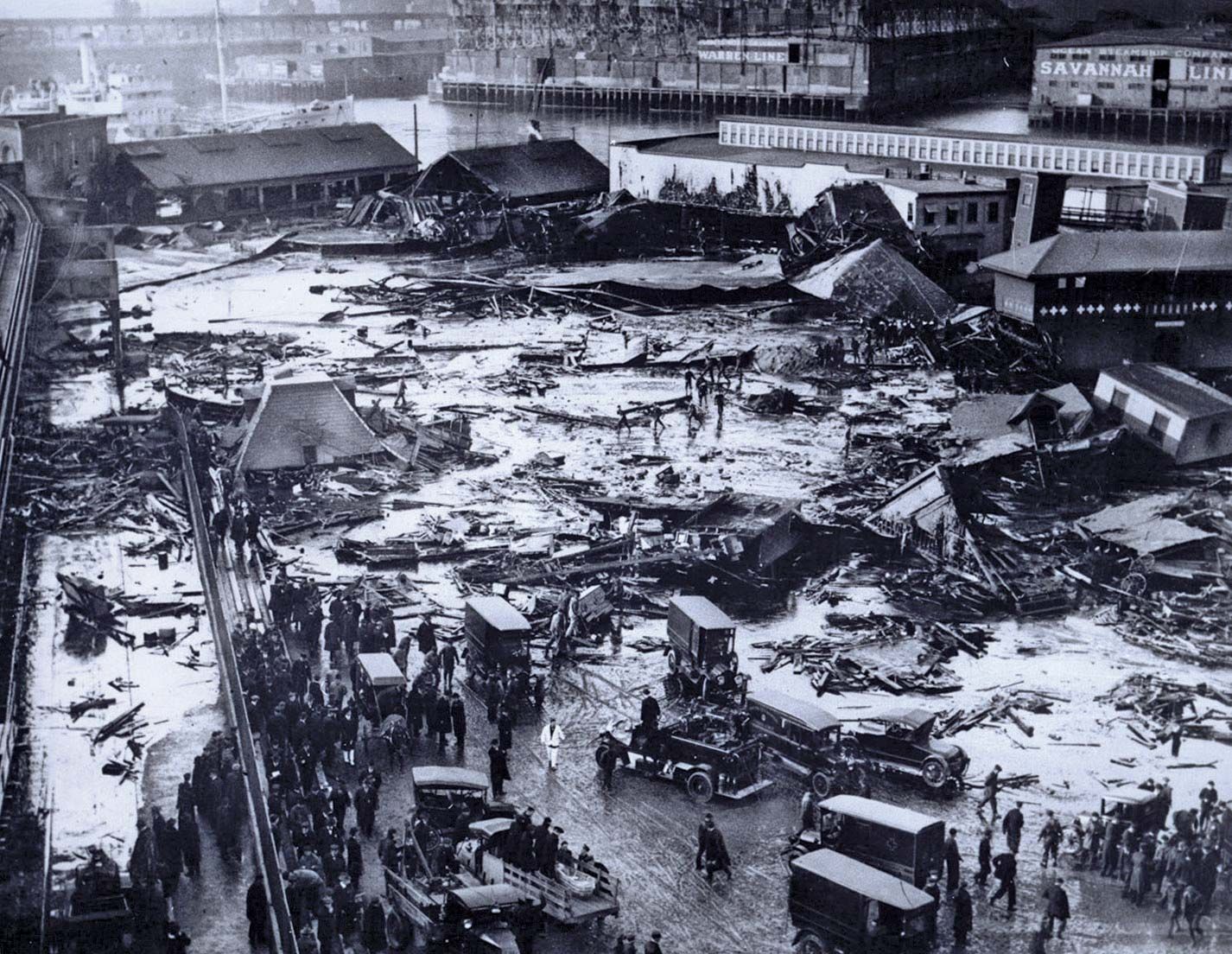On a chilly January morning in 1919, Boston’s North End witnessed one of history’s most bizarre industrial catastrophes. A massive steel tank containing 2.3 million gallons of molasses suddenly burst, unleashing a sticky tsunami that forever changed the neighborhood’s landscape and its people’s lives.
The fatal wave struck without warning at 12:30 PM on January 15th. Workers nearby heard a sound like machine-gun fire as the tank’s metal panels ripped apart. Moments later, a towering wave of dark molasses, reaching heights of 15 feet, surged through Commercial Street at an astounding 35 miles per hour!

The devastating aftermath of the Great Molasses Flood. Image credit: Wikipedia
The devastating molasses flood crushed everything in its path with incredible force. Buildings crumbled like paper houses, and the elevated railway tracks groaned under the sticky onslaught. People caught in the wave struggled desperately against the thick, brown tide that pulled them under. Some survivors later described how the air itself seemed to thicken, making it nearly impossible to breathe.

Rescue workers and cleanup crews at the scene. Image credit: Britannica
The destruction painted a grim picture of industrial-age negligence. Twenty-one people lost their lives in the disaster, while 150 others suffered injuries. Horses, trapped in the syrupy mess, thrashed helplessly until they drowned. The cleanup efforts lasted for months, with workers using salt water, sand, and eventually rain to wash away the stubborn molasses.
This catastrophe exposed the dark underbelly of America’s rapid industrialization. The tank’s owner, United States Industrial Alcohol Company, had rushed its construction to meet the growing demand for industrial alcohol. They ignored obvious warning signs like the tank’s frequent leaks and concerning creaks. Local residents had reported molasses dripping from the tank’s seams, but their warnings went unheeded.
The disaster’s aftermath brought significant changes to construction and industry regulations. Massachusetts introduced some of the first requirements for architectural plans review and engineering calculations. Building inspections became mandatory, and companies could no longer prioritize profit over safety so brazenly.
Today, old-timers say that on hot summer days, you can still catch the faint smell of molasses in Boston’s North End. While this might be urban legend, the Great Molasses Flood’s impact on industrial safety standards remains very real. The disaster serves as a powerful reminder of how corporate negligence can lead to devastating consequences.
References:
Great Molasses Flood – Wikipedia – link
Boston Globe – The Great Molasses Flood – link
Great Molasses Flood – Britannica – link
Categories: American History, Do you know, Historical Disasters, Industrial Accidents, Urban Legends
Tags: boston history, corporate negligence, Historical Events, industrial disaster, industrial safety, molasses flood, North End Boston, urban disasters
Religion: None
Country of Origin: United States
Topic: Industrial Disaster
Ethnicity: None

